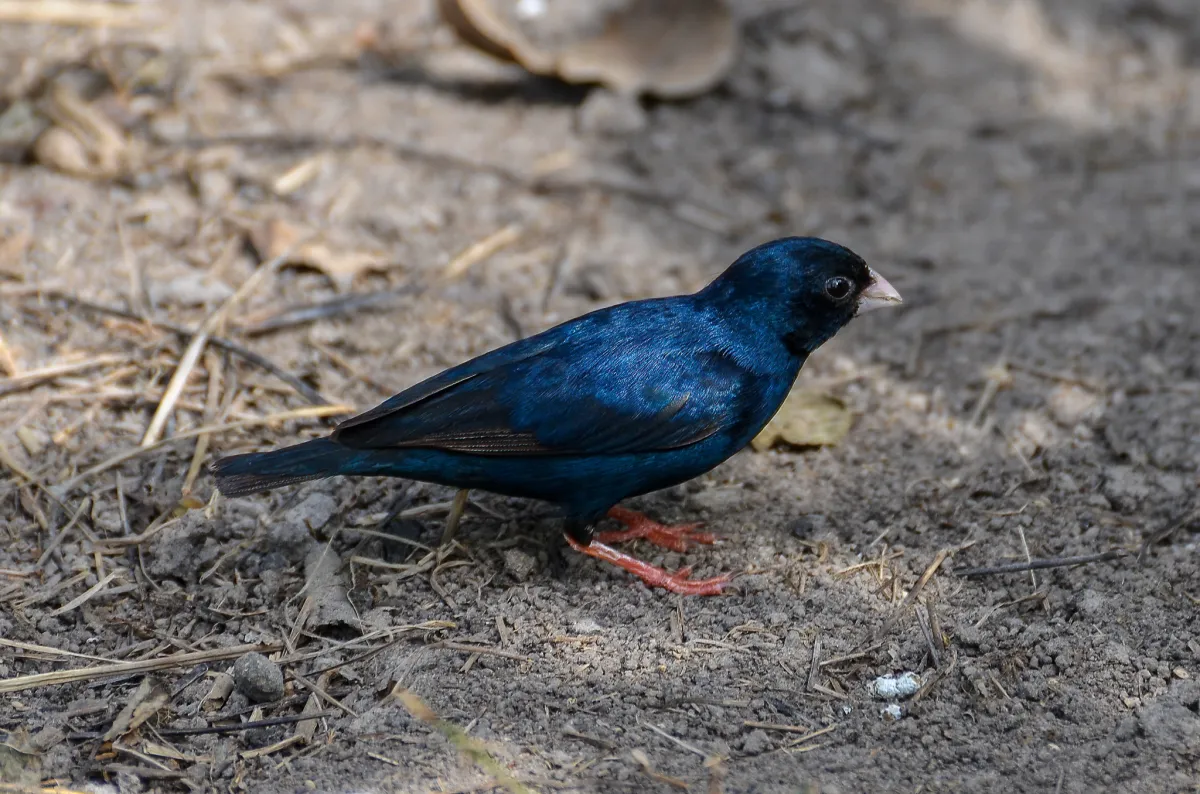The Village Indigobird, Vidua chalybeata, is a small songbird in the Viduidae family. It grows up to a length of around 12 centimetres.

Appearance and Behaviour
The Village Indigobird, also sometimes known as the Steel-blue Widowfinch, is a resident breeding bird in most of Africa south of the Sahara.
The adult male is entirely greenish-black/bluish-black except for his orangey legs and conical white bill. The female somewhat resembles a female house sparrow, with streaked brown upperparts, buff underparts, a whitish supercilium (basically an eyebrow) and a yellowish bill. She also has orangey/red legs.
During courtship displays, male indigobirds showcase their vibrant plumage and perform intricate aerial acrobatics to court females. Their melodious songs fill the air, adding to the mesmerizing spectacle of nature’s courtship dance.
Females, on the other hand, exhibit more subdued colours, blending seamlessly into their surroundings to protect their nests and young from predators.

Diet
The main diet of these birds consists of seeds and grain.
Ecological Significance
Beyond their aesthetic appeal, these birds play a vital role in their ecosystem. As brood parasites, similar to the Cuckoo in some ways, they engage in a fascinating reproductive strategy whereby they lay their eggs in the nests of other bird species, relying on them to raise their young. This behaviour, while seemingly cunning, contributes to the intricate balance of species interactions within their habitat.
Typically, the female lays 2 to 4 white eggs in the host nest (most often that of the Firefinch, whose eggs are also white) but, unlike with the Cuckoo, the eggs are merely added to the clutch and they do not destroy the host’s own eggs.
By parasitizing the nests of other birds, indigobirds indirectly influence the population dynamics of their host species, shaping the distribution and abundance of avian communities in their environment.
Conservation Challenges
Despite their resilience and adaptability, Village Indigobirds face various threats to their survival. Habitat loss and fragmentation, driven by human activities such as deforestation and agricultural expansion, pose significant challenges to their populations. Additionally, climate change and habitat degradation further exacerbate these pressures, jeopardizing the delicate balance of their ecosystem.
The conservation status of the Village Indigobird is, however, classified as ‘least concern’ by the IUCN.